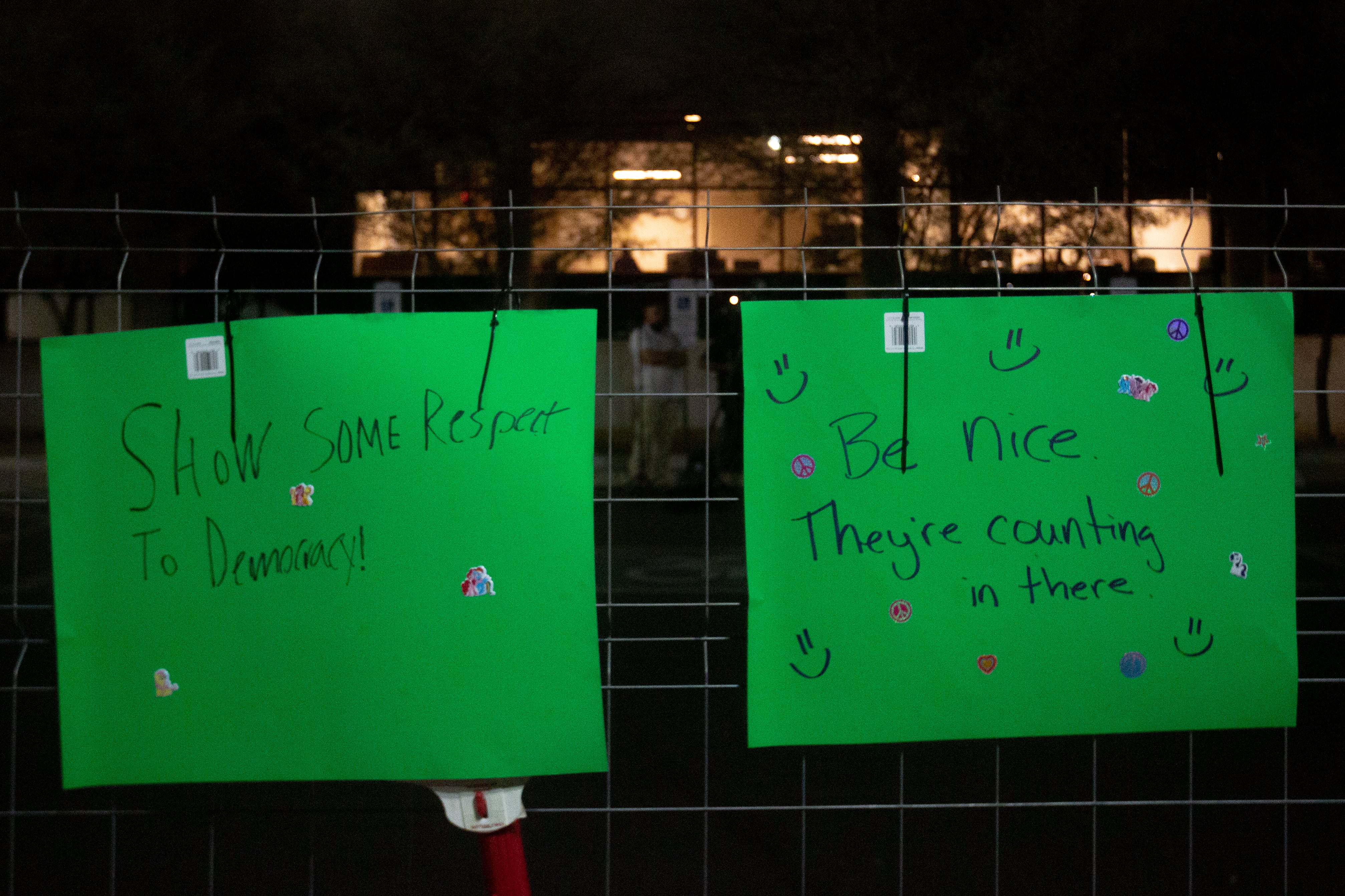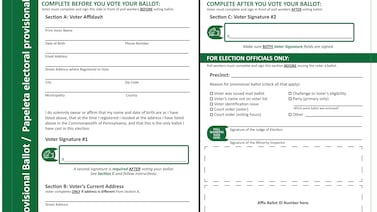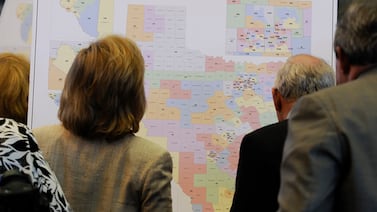Votebeat is a nonprofit news organization reporting on voting access and election administration across the U.S. Sign up for our free newsletters here.
A Votebeat investigation published Friday found that Pinal County election officials documented glaring errors in the ballot counts before the election was certified, but didn’t reveal them until after a recount forced them to do so. The mistakes meant that hundreds of ballots initially went uncounted.
In response to the findings, election experts and advocates say the state should consider new rules and guidelines for double-checking election results. They also recommend increasing state support for county officials tasked with running elections.
Just as important, they say, is for election officials across the state and country to be completely transparent about mistakes so they can’t happen again — even if that means more criticism in an already hostile environment.
“If we make mistakes, we have to acknowledge that and be really ready to say how it happened and how it’s not going to happen again,” said Matt Crane, executive director of the Colorado County Clerks Association. “The wrong answer is to sweep it under the rug, or not report it.”
Here are four ways Arizona could better ensure accurate elections:
1. Strengthen rules for double-checking results
Arizona has some rules for how county election officials must double-check election results, but other states have more detailed requirements that experts say can buttress trust in results.
For example, Colorado’s election rules, which are established by the secretary of state and have the force of law, require counties to follow a checklist for verifying results. Counties also must publish a list of the balanced ballot and voter numbers in a results document they produce before certification, called a canvass.
The checklist acts as a helpful roadmap for election officials to ensure their results are accurate, said Peg Perl, chief deputy clerk in Jefferson County, Colorado. The numbers don’t always exactly match, Perl said — they might be off by a dozen or less, countywide — but she said officials do their best to understand each remaining discrepancy.
“We all know it’s a human process and it’s never going to be perfect,” Perl said. “but it’s not about being perfect, it’s about being trustworthy and careful.”
Jennifer Morrell, founder of an elections consulting firm and an expert on post-election reconciliation, said she recommends adding a requirement to the Arizona Election Procedures Manual — a detailed document that dictates how the state’s elections must be run that has the force of law — mandating that counties list balanced numbers and explain discrepancies within their canvass.
The procedures manual currently requires elections directors to convene “audit boards” to reconcile discrepancies before the results are certified, but doesn’t require this reconciliation to be made public within the canvass.
Merissa Hamilton, a grassroots advocate for elections integrity in Arizona, said she believes this requirement should be not just in the procedures manual, but also in state law, which is changed through a public process. And the numbers should be presented publicly to county supervisors before they certify the election, she said.
“The voters need to be able to have a public process,” she said. “Candidates need to know what occurred.”
The procedures manual should have enough detail in it to provide more of a roadmap for newer election officials, said Tammy Patrick, co-CEO of the National Association of Election Officials and a former election official in Maricopa County.
They need to have “enough information to do the job well without a lot of experience,” Patrick said.
The secretary of state’s office began revising the procedures manual once new Secretary of State Adrian Fontes took office and that process is ongoing, according to office spokesperson Paul Smith-Leonard.
2. Consider improvements to the state’s hand-count audit
After 2020, some criticized Arizona for not having a strong enough post-election hand-count audit. That led to calls for full hand counts, and eventually the state Senate-ordered Cyber Ninjas review of Maricopa County ballots in 2021.
The law currently requires counties to hand-count all ballots cast at 2% of precincts or vote centers, along with a small sample of early ballots — either 5,000 early ballots or 1% of early ballots, whichever is less. This hand count is only required if all recognized political parties decide to participate and provide workers. If the hand count moves forward and discrepancies are found, the number of ballots studied grows.
Morrell said the state should consider strengthening this requirement. She said officials should ensure the audit is looking at a statistically-significant sample of ballots. And there are benefits to building an audit process that is transparent and that voters can easily follow, she said.
Some states, including Pennsylvania, Colorado, Rhode Island, and Virginia, have started using what’s called a risk-limiting audit to verify election results — a detailed process that calculates the risk that election results are wrong, and then hand-counts the number of ballots needed to prove that the results are correct. Morrell said she wasn’t sure that was the right step for Arizona, but the state should consider all options.
Hamilton agrees the audit needs to be strengthened. She believes that state law should require a statistically-significant number of ballots to be hand-counted, based on the number of ballots cast, rather than a set number of ballots, as the law requires now.
“It would give the public more confidence that the hand count was sufficient to identify errors, if they exist,” she said.
3. Follow best practices for tracking ballots
Morrell and Patrick wrote a detailed report on tracking ballots years ago that emphasized the importance of creating and using clear forms.
They and others agree that, while much of poll worker training is focused on technology, training on how to properly track ballots is just as important.
Hamilton said she believes Arizona law needs to be updated to include stronger requirements for what is tracked on polling place forms, and poll workers should have to stay at the location until the numbers are balanced.
Eight of Arizona’s 15 counties take all ballots cast at polling places for tabulation at a central location. Having forms to document exactly how many ballots were cast at the polling place to compare to the number tabulated — and tracking that batch by batch as the ballots are scanned — is crucial, Patrick said.
“That accounting and that reconciling should be happening through the whole piece of it,” Patrick said.
4. Provide better support for county officials who run elections
The key to ensuring that all ballots have been counted accurately isn’t just a specific methodology, but also having the employees and funding to do it well in time for results to be finalized, Patrick said. This process typically happens around the same time that counties are conducting the hand-count audit and other post-election tasks, she said.
As top election officials resign from their post across the country, Patrick said it’s important for them to write down their procedures, so that new administrators know what to do. Most states have seen one-third to one-half of their top election officials leave in recent years, she said — at least ten of Arizona’s 15 counties have witnessed their election directors or recorders leave within the past three years. In Pinal County, the county has put four different officials in charge of elections in the last three years.
Fontes is asking the state Legislature for six additional employees to better support counties. He said that the state’s election officer certification training beginning in June “will include specific guidance to help ensure that issues like those that occurred in the last election, do not happen again.”
Many experts also said that peer support is important. During new clerk training in Colorado, experienced clerks “really wrap our arms around the new folks,” Crane said. That includes spending a lot of time with them explaining state laws, and creating a mentor program, he said.
“It’s really about building this connectivity around people,” he said, “and letting people know they aren’t in this alone. Everyone has struggles in this job, and don’t be afraid to speak up.”
Jen Fifield is a reporter for Votebeat based in Arizona. Contact Jen at jfifield@votebeat.org.







